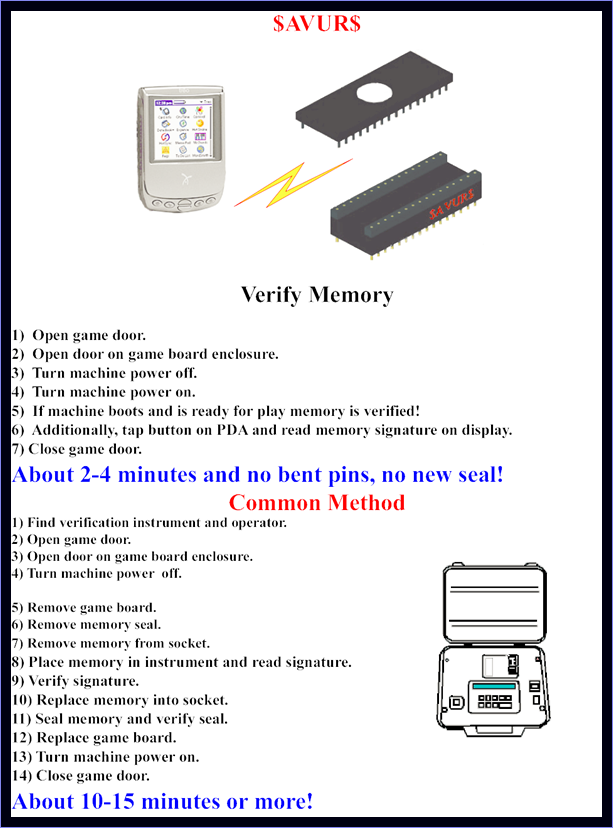

Technology is constantly moving forward, reporting and control standards are becoming more complicated and cheaters are keeping up with all of it. Isn’t it time that game memory verification moved into the 21st century? Right now there’s an IC socket with no intelligence that connects the game memory to the game board and that’s secured by some sort of mechanical seal to detect an unauthorized change of game memory. It helps, but it’s not foolproof, just ask an experienced regulator. Sure, there’s a power-up check of game memory, but that’s performed by the game memory itself, is normally not of encryption quality and it’s the first thing that will be bypassed by someone who made his own memory for your machine. After all, the only thing a cheat needs is a short time of play and he can leave with his winnings and leave you in the red.
Do you have a verification of game memory required before paying a jackpot that is greater than a certain amount? There is normally a time period before this can be done, which results in a player who would rather leave with his winnings than put some of them back into play. With $AVUR$ you can verify memory in less than 3 minutes.
Have you ever had a machine on the floor with the wrong paytable memory? This can be a very difficult problem to solve; at least quickly. Wouldn’t it be a good idea if you were able to tell the machine that it should only operate with a unique paytable until you tell it otherwise? This is easily done and then you can let the mechanics populate the machines with the paytables and go on your way. They won’t play if the wrong paytable is installed.
How about reporting requirements? Do you have to regularly verify and certify that all machines on the floor are running the programs you think they are? This can be very time-consuming using the present methods of manual verification. $AVUR$ can help automate this time consuming task.
Do you sometimes want to cap a machine and prevent it from being played, but still leave your floor lighted? Do you want to turn it off and prevent some well-meaning mechanic from coming along and putting it back into play again by turning the power switch back on? A single command to $AVUR$ will stop the game program from running until you authorize it to operate again.
Are you a regulator who wants to be sure that machines removed from the floor in your jurisdiction are not put into play right down the street again? $AVUR$ can help you do this and will also give you a unique electronic serial number that can be logged for tracking purposes.
Are you a route operator who would like to be sure that a location pays you your share of winnings as long as your machines are operating there? $AVUR$ and a simple program modification is all that is required.
Simply remove the IC socket from the memory you want to protect and substitute the $AVUR$ socket in its place. It’s a very quick operation that any technician can perform and your machine is essentially unchanged-except it’s now protected much better than it ever was before. The gaming inspectors can still use their present memory verification devices and so can you, though you probably won’t want to after you have used the $AVUR$ system for a short time.
